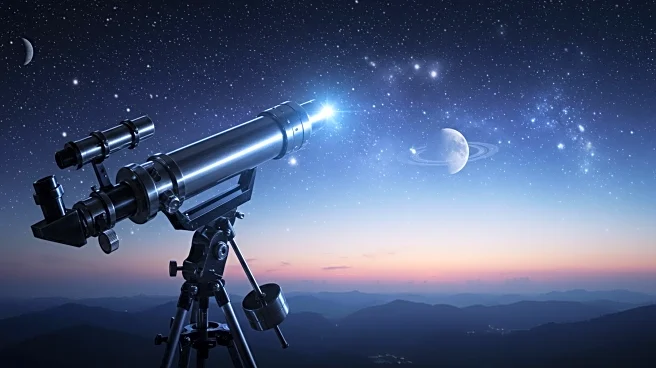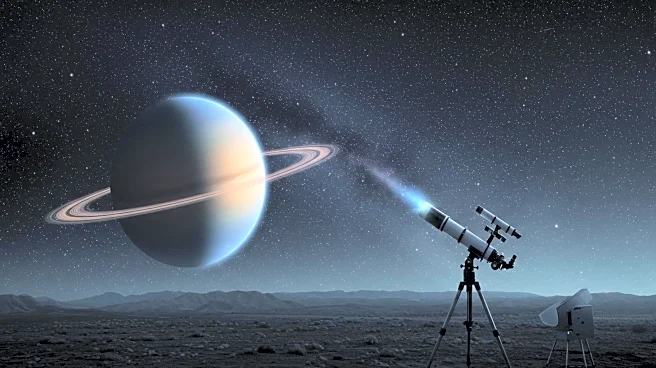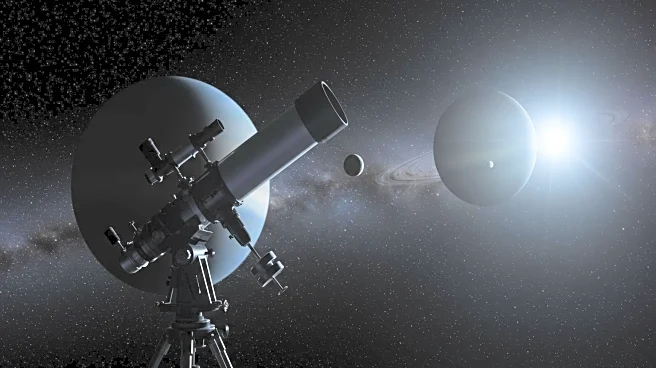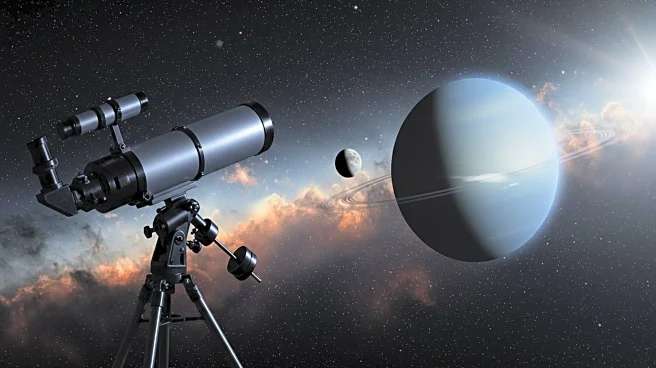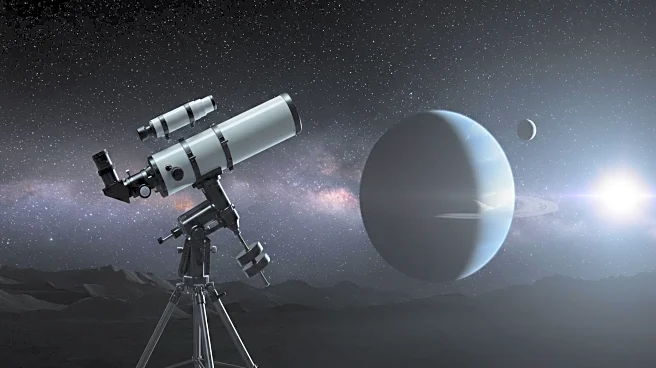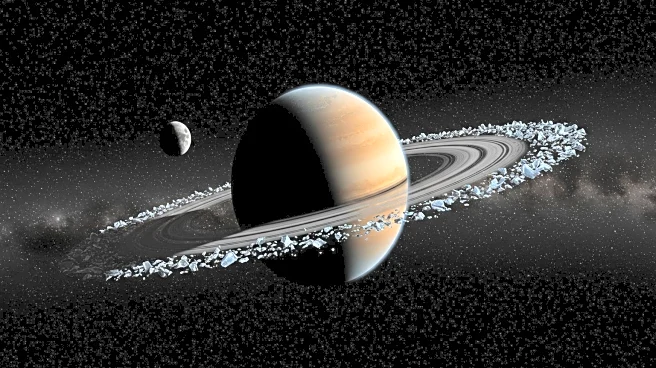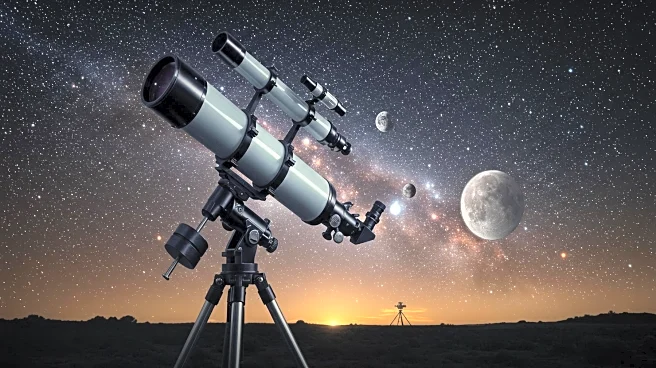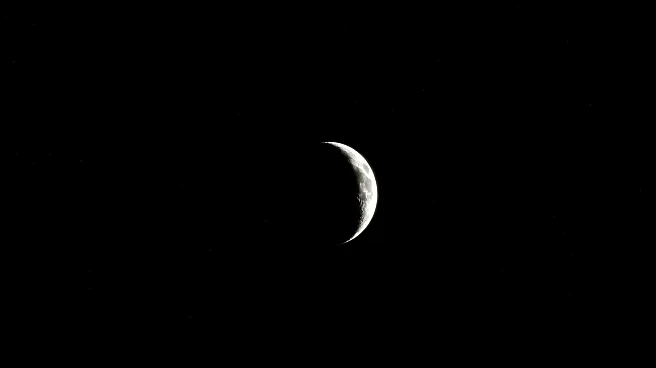What's Happening?
NASA's James Webb Space Telescope (JWST) has discovered a new moon orbiting Uranus, marking a significant milestone in space exploration. The moon, temporarily named S/2025 U1, is approximately 6 miles in diameter. This discovery expands the known number of Uranian moons to 29, highlighting the complex system of small inner moons surrounding the planet. The detection was made using JWST's advanced capabilities, which allow for the identification of smaller celestial bodies that were previously undetectable by missions like Voyager 2. The discovery emphasizes the revolutionary capabilities of JWST, suggesting it has only begun to uncover potential findings in outer planetary systems.
Why It's Important?
The discovery of S/2025 U1 underscores the enhanced capabilities of the James Webb Space Telescope in detecting smaller celestial bodies compared to previous missions. This advancement in technology allows astronomers to gain a deeper understanding of the chaotic and complex history of Uranus's moons and rings. The identification of new moons contributes to the broader knowledge of planetary ring and moon systems, particularly in the outer reaches of the Solar System. This discovery could lead to further insights into the formation and evolution of Uranus and its satellites, potentially revealing more about the dynamics of the planet's ring system.
What's Next?
Following the discovery of S/2025 U1, astronomers may continue to use the James Webb Space Telescope to explore Uranus's moon system further. The telescope's capabilities could lead to the identification of additional moons or other celestial phenomena. This ongoing research will likely contribute to a more comprehensive understanding of Uranus's complex satellite system and its interactions with the planet's rings. The findings may also inform future missions aimed at exploring the outer Solar System and its planetary bodies.
